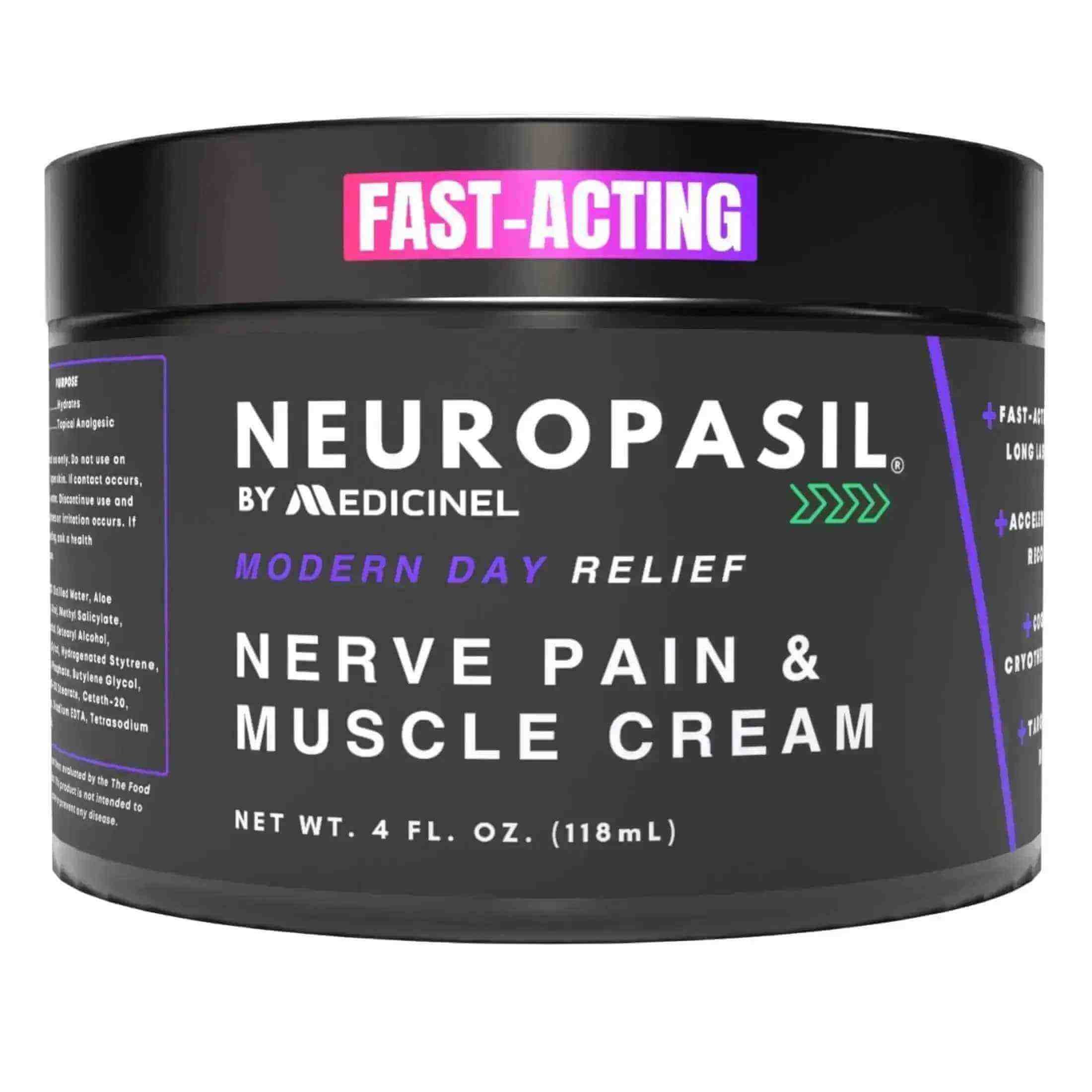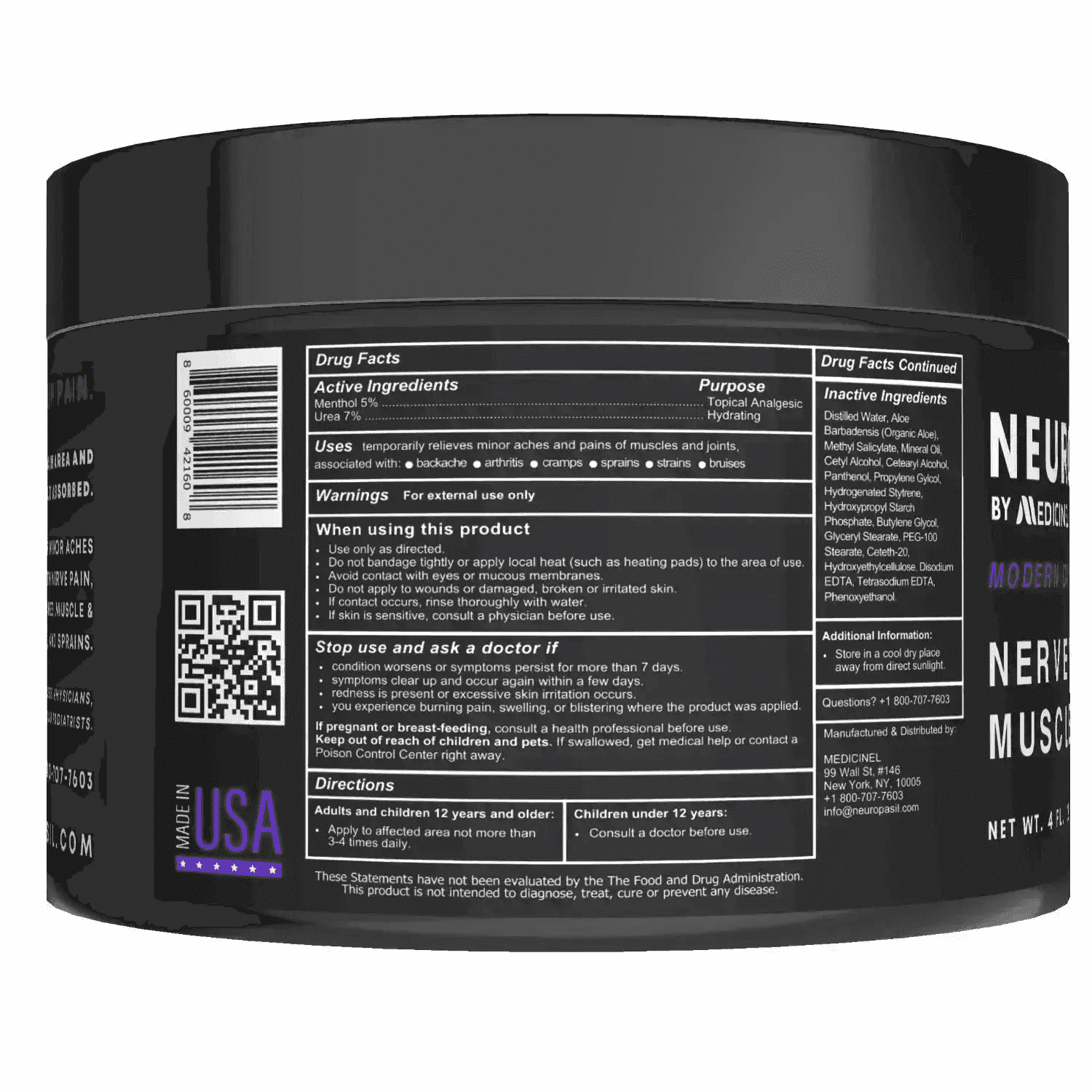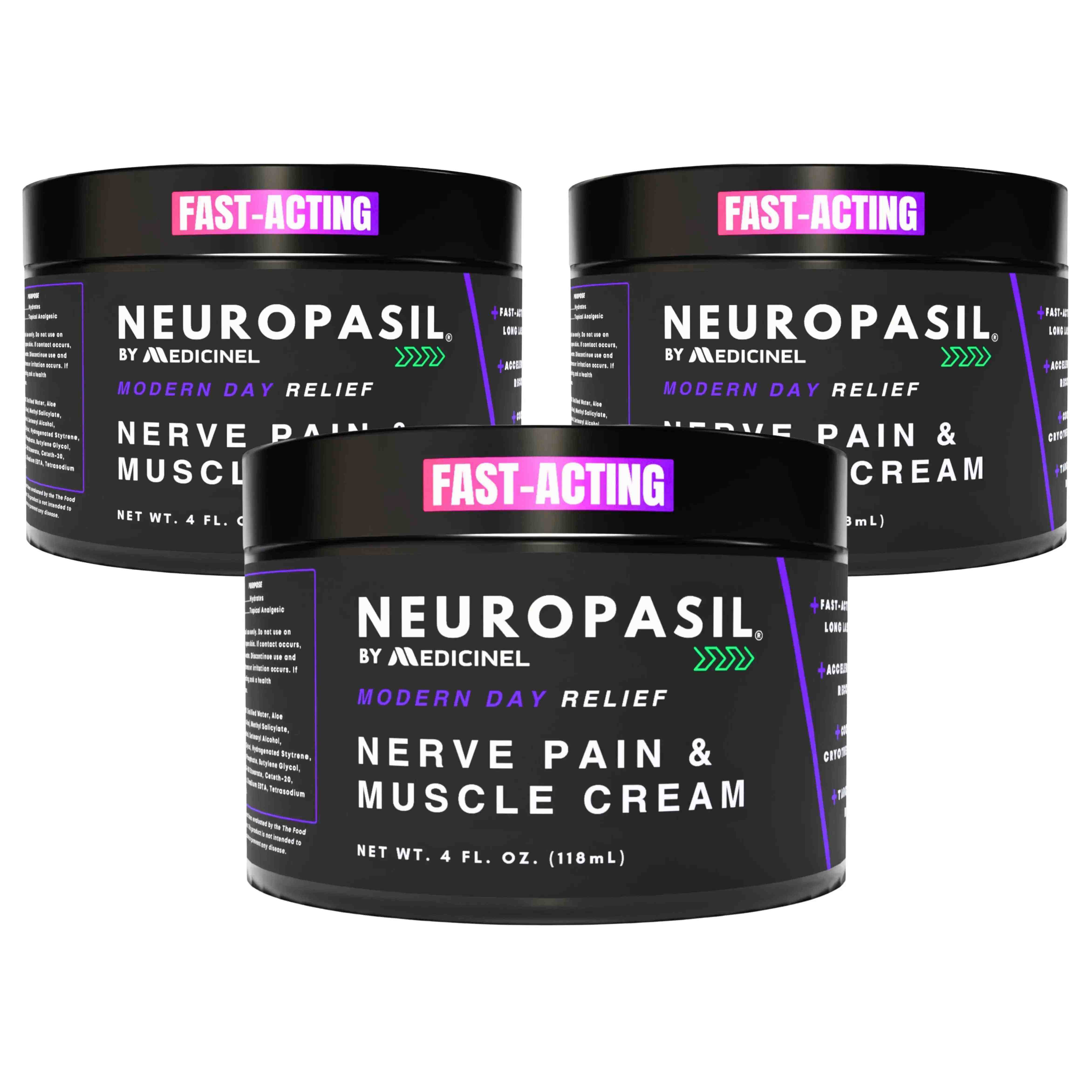Why Muscle Aches Are More Common Than You Think
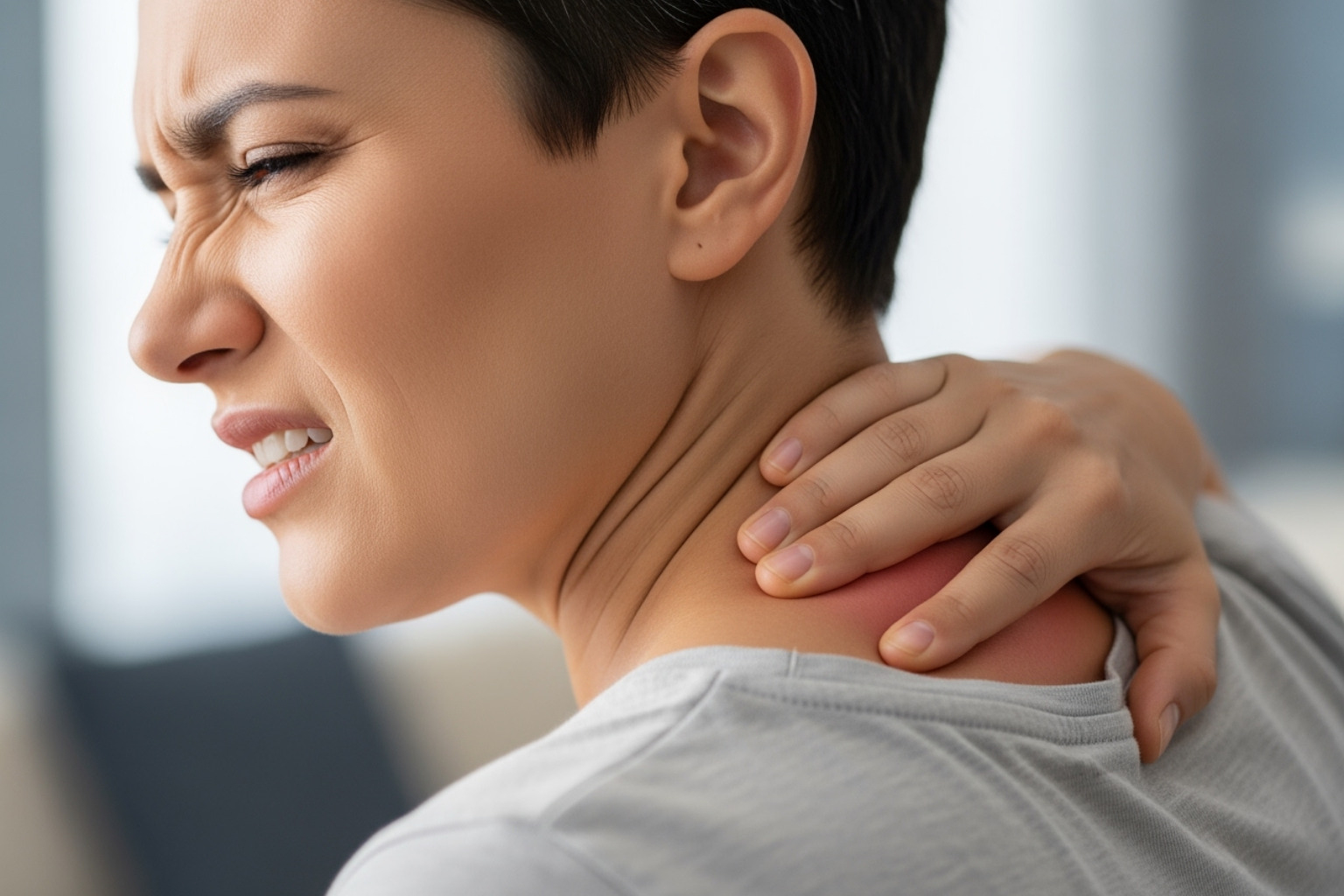
Muscle aches are a near-universal experience, with many older adults living with persistent muscle pain. Whether from post-workout soreness, tension from desk work, or illness, muscle pain can significantly impact your daily life.
Quick Answer: What You Need to Know About Muscle Aches
- Most Common Causes: Tension, stress, overuse, and minor injuries
- Duration: Typically 2-5 days for exercise-related soreness
- Home Treatment: Rest, ice/heat therapy, gentle stretching, and over-the-counter pain relief
- See a Doctor If: Pain lasts over a week, severe unexplained pain, fever, rash, or muscle weakness
- Prevention: Regular stretching, proper warm-ups, good posture, and staying hydrated
The medical term for muscle pain is myalgia. It can range from mild discomfort to debilitating pain. While most muscle aches are temporary and harmless—often caused by poor posture, stress, or physical exertion—some can signal underlying health conditions that need attention.
Understanding the difference between normal soreness and pain that requires medical care is crucial. Most muscle pain from minor injuries, stress, or exercise responds well to home care. However, pain felt throughout your body often indicates an infection, like the flu, or a more serious condition.
This guide will help you identify the cause of your discomfort, when to treat it at home, and when to seek professional help.
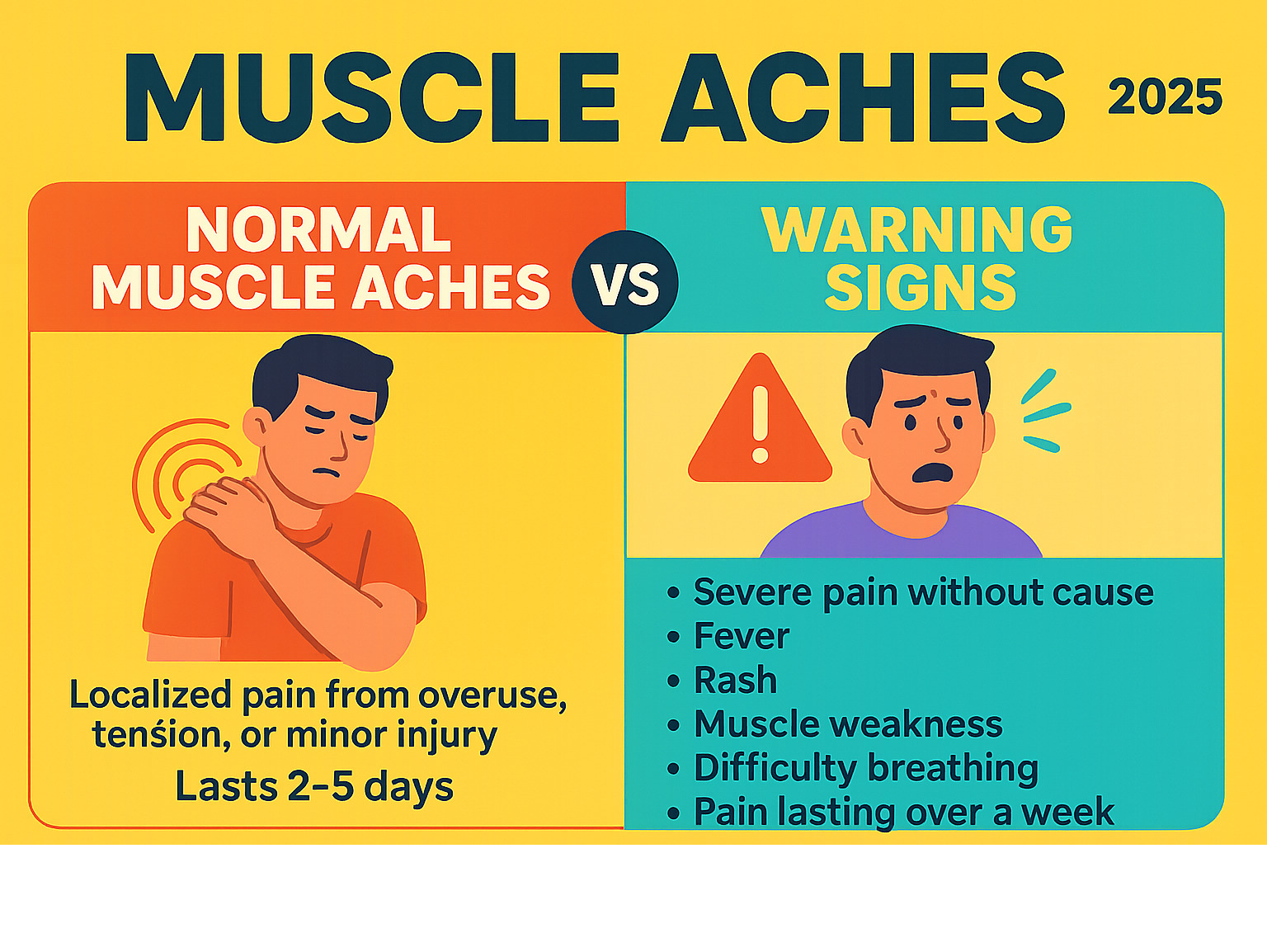
What's Causing Your Muscle Pain? From Overuse to Underlying Conditions
Muscle aches can manifest as dull soreness, stiffness, cramps, or a burning sensation. The discomfort can involve muscles and surrounding soft tissues like ligaments and tendons. Knowing how and where your pain is located provides helpful clues. For instance, tingling, numbness, or shooting sensations might indicate nerve pain.
Common Causes of Everyday Muscle Aches
That familiar soreness after a workout is often Delayed Onset Muscle Soreness (DOMS). It typically begins 12 to 24 hours after you've challenged your muscles in a new way, caused by microscopic tears in muscle fibers. This is a normal part of the repair process that makes muscles stronger and usually fades in two to five days.

Everyday life can also cause muscle aches:
- Tension and Stress: When stressed, we unconsciously tense our muscles, especially in the neck, shoulders, and back, leading to persistent aches. Stress can also hinder the body's ability to fight inflammation. Learn more about the impact of stress on the body.
- Minor Injuries: A sudden twist or awkward lift can cause localized aches from sprains (ligaments), strains (muscles/tendons), or bruises.
- Dehydration: Not drinking enough water can impair essential body functions, including muscle performance, contributing to aches.
- Poor Sleep: Sleep is when your body repairs itself. A lack of quality sleep prevents muscles from fully recovering, which can lead to chronic aches and stiffness.
The Difference Between Localized and Diffuse Pain
Understanding if your pain is localized (in one area) or diffuse (spread throughout the body) is a key step in identifying the cause.
| Type of Pain | Description | Likely Causes |
|---|---|---|
| Localized Pain | Affects a few muscles or a small part of the body. | - Overuse: From repetitive tasks or a tough workout. - Tension: From stress or poor posture. - Minor Injuries: Sprains, strains, or bruises. - Muscle Cramps: Sudden, involuntary contractions. |
| Diffuse Pain | Felt throughout your whole body, often called "body aches." | - Infections: Flu, common cold, COVID-19, Lyme disease. - Systemic Conditions: Autoimmune conditions like fibromyalgia, lupus, or polymyalgia rheumatica. - Medication Side Effects: Certain drugs can cause widespread aches. - Electrolyte Imbalances: Imbalances in minerals like calcium or potassium. |
While localized pain often results from a specific activity, diffuse pain usually signals a broader issue affecting your whole system, such as an infection or an underlying medical condition. When pain spreads everywhere, it's a signal to pay closer attention.
Effective Home Remedies for Your Muscle Aches
The good news is that for most common muscle aches from overuse, tension, or minor injuries, relief can be found at home. A combination of rest, hydration, gentle movement, and smart use of over-the-counter (OTC) remedies can work wonders. For optimizing recovery, check our guide on how to reduce muscle soreness after workout.
For minor aches, some OTC oral pain relievers can help reduce pain and inflammation. These can offer quick comfort, but always follow dosage instructions and consult a pharmacist if you have questions.
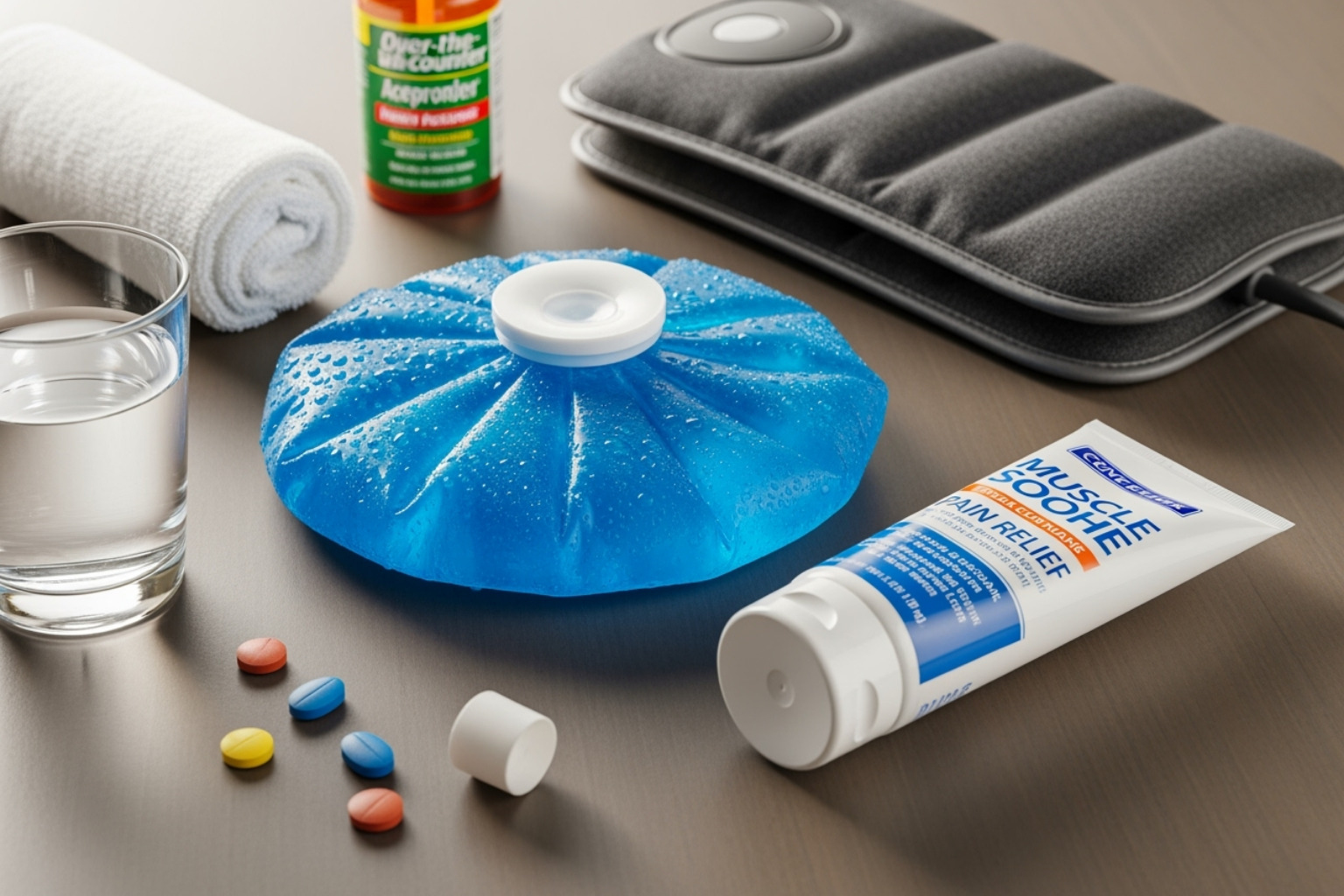
The R.I.C.E. Method for Injuries
For acute injuries like sprains, the R.I.C.E. method is a trusted first-aid approach for the first 48 to 72 hours to manage pain and swelling.
- Rest: Give the affected area a break from the activity that caused the pain.
- Ice: Apply a cold pack for 15-20 minutes at a time, several times a day, to reduce pain and swelling. Use a cloth between the ice and your skin.
- Compression: Gently wrap the area with a stretchable bandage to reduce swelling and add support. Don't wrap it too tightly.
- Elevation: Raise the injured area above heart level to minimize swelling.
You can find more on the R.I.C.E method explained.
Heat vs. Cold Therapy
Deciding between heat or cold depends on the situation. Ice is for acute injuries, while heat is for chronic stiffness.
Ice is best for:
- Acute injuries: Within the first 24 to 72 hours.
- Inflammation and swelling: It constricts blood vessels, numbing pain.
Heat is best for:
- Lingering pain: After the initial 72 hours.
- Stiffness and tension: It increases blood flow, relaxing muscles.
- Before gentle stretching to warm up muscles.
Alternating hot and cold compresses, or "contrast therapy," can also be effective for reducing soreness after workouts.
Natural Relief and Gentle Therapies
Beyond R.I.C.E. and temperature therapy, other home strategies can provide relief for muscle aches.
Topical natural solutions like creams and gels offer localized relief. Many contain ingredients like menthol or camphor that create sensations to distract from pain. We at Neuropasil specialize in nerve and muscle relief creams for targeted comfort.
Gentle stretching improves blood circulation, aiding pain relief and preventing stiffness. Taking stretch breaks during the day is highly beneficial. Massage, whether professional or self-administered with a foam roller, can relieve tension and reduce pain.
A warm bath with Epsom salts (magnesium sulfate) can ease muscle soreness. Magnesium is important for muscle function, and some find relief by consuming magnesium-rich foods.
Finally, stress management is key. Since stress contributes to muscle tension, activities like yoga, meditation, or deep breathing can be very effective.
When to See a Doctor: Recognizing Serious Symptoms
While most muscle aches resolve with home care, some signal a more serious issue requiring medical attention. Knowing these warning signs is key to getting the right care.

Call your healthcare provider if your muscle pain lasts more than a few days without improvement, or if you have severe pain without an obvious cause. Pay attention to signs of infection like redness, swelling, or warmth around the muscle. A recent tick bite or a "bull's-eye" rash could indicate Lyme disease and requires prompt treatment.
If your muscle aches began after starting a new medication, such as statins for cholesterol, consult your doctor.
Go to the emergency room for trouble breathing, extreme muscle weakness, or a high fever with a stiff neck. Chest pain or pressure with muscle aches should never be ignored. Seek emergency care for a severe injury that prevents normal movement.
Less Common but Serious Causes of Muscle Aches
Certain medical conditions can present as simple muscle aches but require specialized treatment.
- Fibromyalgia: A chronic condition causing widespread pain, tenderness, fatigue, and sleep problems, often feeling like the brain is amplifying pain signals. Find more information on Fibromyalgia.
- Autoimmune conditions: In conditions like lupus, the immune system attacks healthy tissues, causing inflammation and pain. Polymyalgia rheumatica causes rapid-onset pain and stiffness in the shoulders and hips, especially in the morning, typically in people over 50.
- Thyroid problems: An underactive thyroid (hypothyroidism) can cause muscle and joint pain, swelling, and fatigue.
- Lyme disease: A tick-borne infection that starts with flu-like symptoms and muscle aches, often with a characteristic bull's-eye rash.
- Rhabdomyolysis: A rare but serious condition where damaged muscle fibers release contents into the blood, harming the kidneys. It causes severe muscle pain, weakness, and dark urine.
If you have chronic arthritis pain, our guide on Managing Arthritis Pain: A Guide to Long-Lasting Relief may be helpful.
How Infections, Diseases, and Medications Contribute
Widespread muscle aches can be a sign of your immune system fighting a viral infection like the flu or COVID-19.
Autoimmune diseases like rheumatoid arthritis cause your immune system to attack healthy tissues, leading to chronic inflammation and persistent muscle aches.
Medication side effects are another cause. Statins (for cholesterol) cause muscle pain in many users. ACE inhibitors (for blood pressure) and other drugs can also contribute.
Electrolyte imbalances (calcium, potassium) or vitamin D deficiency can impair muscle function, leading to cramps and aches.
Never stop taking a prescribed medication without consulting your doctor. For nerve-related discomfort, our neuropathy resources offer more insight.
Preventing Future Aches and Managing Chronic Pain
While soothing existing muscle aches is important, prevention is the best strategy. Embracing healthy lifestyle changes can prevent future discomfort and help manage chronic pain. For more strategies, explore our article on the best ways to relieve muscle aches with physical activity and healthy living.
Simple adjustments to how we move, work, and rest can prevent many common causes of muscle pain. Using proper form during activities and ensuring good ergonomics at work can prevent unnecessary strain. Ignoring muscle pain can lead to chronic pain, which impacts sleep, mood, and quality of life, and can even create new problems as your body compensates for the discomfort.
The Importance of Warm-ups, Cool-downs, and Stretching
Muscles need to warm up before they can perform their best. This applies to everyone, not just athletes.

- Warm-ups: Five minutes of light movement or dynamic stretches increases blood flow to muscles, making them more flexible and preventing strains. The American Heart Association on warm-ups offers excellent guidance.
- Cool-downs: After physical activity, a few minutes of gentle stretching helps muscles return to their resting state, preventing stiffness and soreness.
- Regular stretching: Especially for those with desk jobs, regular stretching is a great injury prevention strategy that improves flexibility. Taking short breaks to move around keeps muscles from getting tight.
How Age Affects Muscle Pain
Our bodies change as we get older, which affects how we manage muscle aches. As we age, muscle fiber density decreases, making muscles less flexible and more prone to injury.
Sarcopenia, or age-related muscle loss, is a normal process that can put additional stress on joints, especially when combined with conditions like osteoarthritis. This leads to an increased injury risk, meaning we need to be more thoughtful about preparation and recovery.
Nighttime leg cramps also become more common with age, often resulting from dehydration or natural changes in tendons. Daily gentle stretching of calves and hamstrings can help reduce their frequency and severity.
Medication considerations are also important, as many older adults take medications like statins that can cause muscle aches as a side effect. It's crucial to discuss any new pain with a healthcare provider.
Managing chronic muscle aches requires a proactive approach, including physical activity, targeted therapies, and stress reduction. It's an investment in long-term well-being and independence.
Frequently Asked Questions about Muscle Pain
Here are answers to some of the most common questions we hear about muscle aches.
How long do muscle aches typically last?
The duration depends on the cause. For Delayed Onset Muscle Soreness (DOMS) from exercise, the pain typically lasts 2 to 5 days. A more significant injury like a muscle strain could take several weeks to heal. If your muscle pain lasts for more than a week without a clear reason or gets worse, it's time to see your doctor.
Is it okay to exercise with sore muscles?
It depends on the severity. For mild to moderate soreness, light activity like walking or gentle stretching (known as "active recovery") can help by increasing blood flow and reducing stiffness. However, if your muscle aches are severe, sharp, or limit your movement, you should rest that muscle group. The golden rule is to listen to your body. If an activity worsens the pain, stop and rest.
What vitamin deficiency can cause muscle aches?
Yes, a lack of certain nutrients can cause muscle aches. The most common is a Vitamin D deficiency. Vitamin D is essential for calcium absorption, which is critical for proper muscle function. A deficiency can lead to persistent muscle pain and weakness.
Calcium and potassium imbalances can also cause muscle cramps and aches. If you suspect a nutritional deficiency is behind your persistent aches, discuss it with your healthcare provider, who can perform tests and recommend a plan.
Conclusion
We've explored the many facets of muscle aches, from common causes like tension and overuse to the difference between localized and diffuse pain. We've also covered a toolkit of home remedies, including the R.I.C.E. method, ice vs. heat, and the benefits of gentle movement.
Most importantly, we've highlighted the warning signs that indicate it's time to see a doctor. This knowledge is empowering. Proactive choices, like proper warm-ups and understanding age-related changes, can help prevent future discomfort and manage chronic pain.
By understanding our bodies and knowing when to use home care versus seeking professional advice, we take charge of our well-being. For those times you need targeted relief from lingering aches, we invite you to explore natural solutions like Neuropasil's cream. It's formulated for both nerve and muscle relief, offering comfort when you need it most. You can find your nerve pain relief solution with Neuropasil on our website. Here's to feeling better, naturally!










